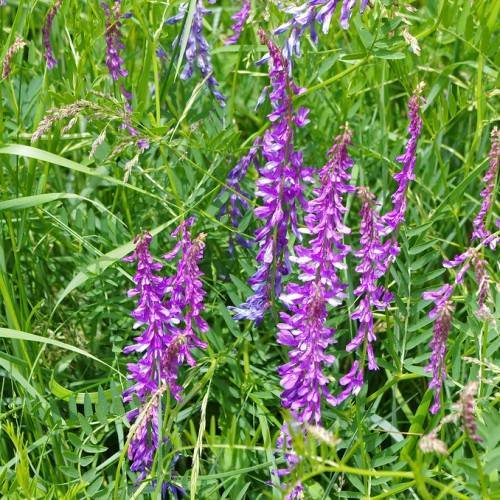
tufted vetch
Vicia cracca
Also Known As - bird vetchCycle:
Perennial
Watering:
Frequent
Hardiness Zone:
4
Flowers:
Flowers In Spring
Sun:
Full sun, Part sun/part shade
Fruits:
Fruits In Summer Ready In
Leaf:
Yes
Growth Rate:
High
Drought Tolerant:
Yes
Care Level:
Medium
watering
Burkwood viburnum plants should be watered once a week during the growing season. The amount of water depends on the environment and the soil type, but generally 1 to 2 inches per week should suffice. During dry periods, the soil should be checked with a finger to ensure the moisture is adequate. During the winter months when the plant is dormant, water should be reduced to 1 inch or less per month.
sunlight
Burkwood viburnum (Viburnum x burkwoodii) thrive with full sun exposure in spring and partial sun in summer and fall. Partial sun means 4 to 6 hours of indirect light per day. The plant prefers not to be in full shade or direct sunlight for an extended period. In temperate climates, the Burkwood viburnum does best in partial sun in the morning followed by shade during the hottest parts of the day.
pruning
Burkwood viburnum is best pruned in late winter or early spring, while the plant is still dormant. Begin pruning by removing dead or diseased branches. Cut these out as close to the trunk as possible to minimize the spread of disease. Next, selectively prune away any weak or broken branches. You should also prune any branches that come in contact with the ground to keep them from becoming too bushy or overrun with weeds. Finally, prune away any branches that cross or rub against other branches to promote healthy air flow around the plant. It is recommended to make your cuts at a 45-degree angle, just above a bud or node, to promote healthy new growth. For general maintenance pruning, try to remove no more than 1/3 of the previous season’s growth. Pruning too heavily can reduce flowering and limit size. If you are looking to reduce the size of your Burkwood viburnum, heavier pruning can be done, but don’t reduce more than 1/2 or 2/3 of the previous year’s growth.
